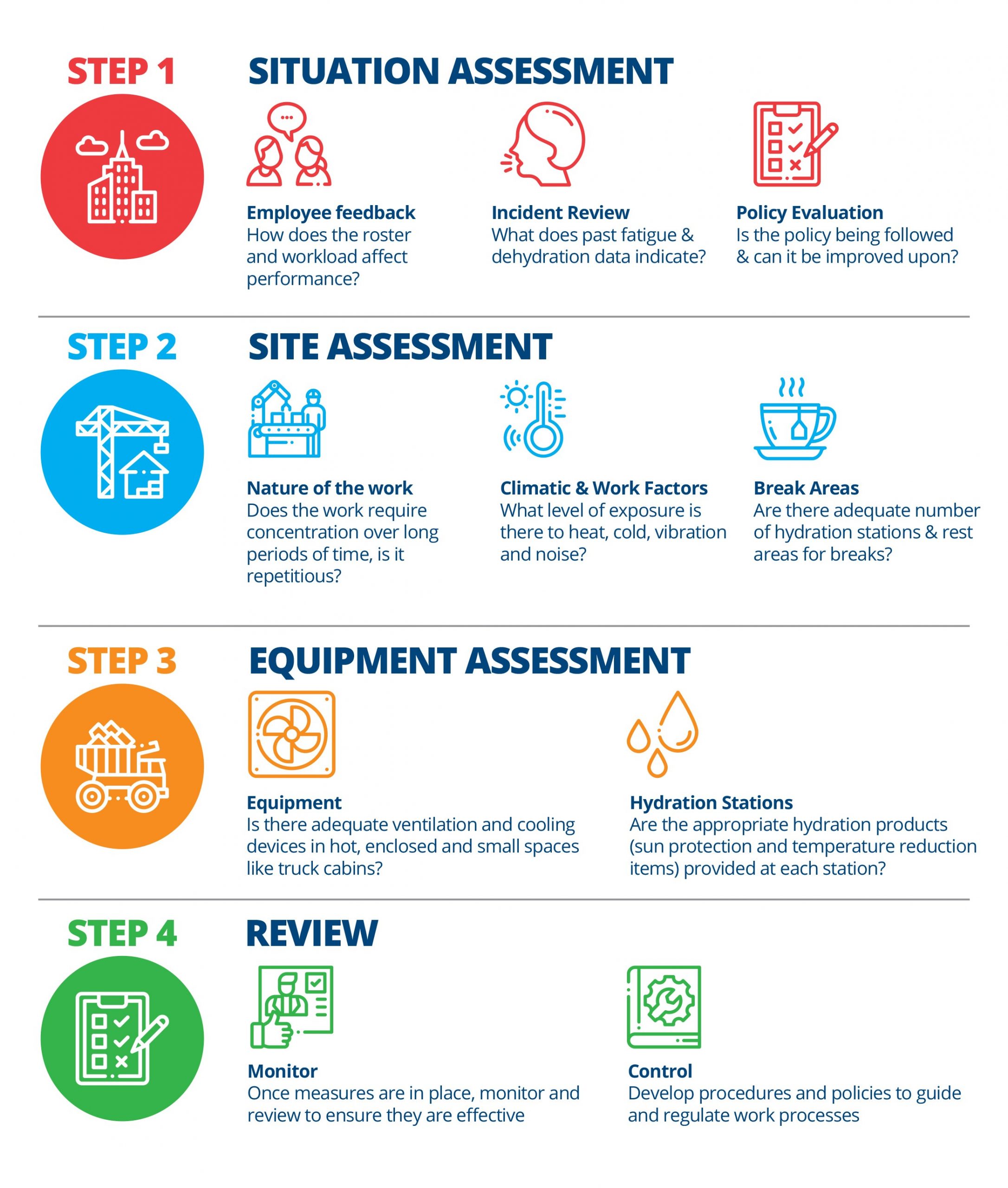
October 10, 2019
The 4 Step Hydration Audit
4 Step Hydration Audit
To reduce dehydration and fatigue in your workers, conduct a hydration audit of your worksite:

- Situation Assessment
- Employee feedback – Ascertain how the roster and workload affect their performance
- Incident Review – Analyse incident data to identify if fatigue was an underlying cause
- Policy Evaluation – Review the company policy on fatigue and hydration, is it being followed and can it be improved upon?
- Site Assessment
- Review the nature of the work – Concentrating for extended periods of time, such as performing repetitious work, can increase risk fatigue. Could a trial period be applied to any new work schedules to gain worker feedback?
- Assess Climatic & Work Factors – What is the level of exposure to heat, cold, vibration or noise? Avoid working in extreme temperature or employ tactics such as shorter work cycles (job rotation).
- Check Break Areas – There needs to be an adequate number of hydration stations/rest areas designed for rest and meal breaks out of the heat. Could you designate areas for sleep as well?
- Equipment Assessment
- Equipment – Ensure there is appropriate ventilation and that there are cooling devices in hot, enclosed and small spaces like truck cabins. Vibrating equipment can cause fatigue, make sure there are low vibration seats in machinery and vehicles and that the appropriate PPE like vibration gloves are supplied.
- Hydration Stations – Provide the appropriate hydration products, sun protection and temperature reduction items at each station
- Monitor & Control
- Monitor – Once measures are in place, monitor and review them to ensure they are effective.
- Control – Develop procedures and policies to guide and regulate work processes
Download 4 Step Hydration Audit









